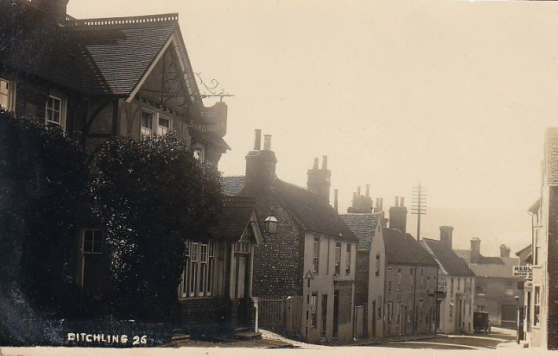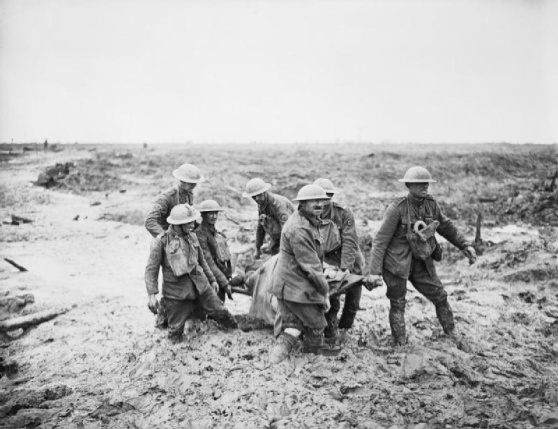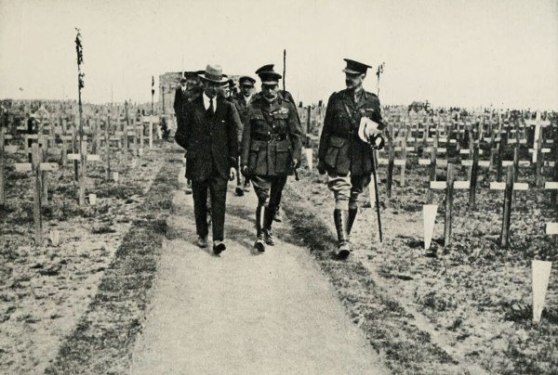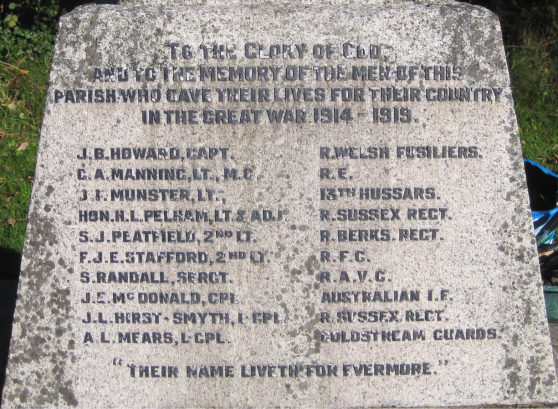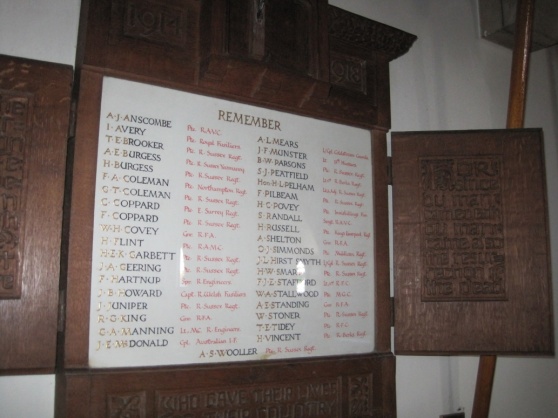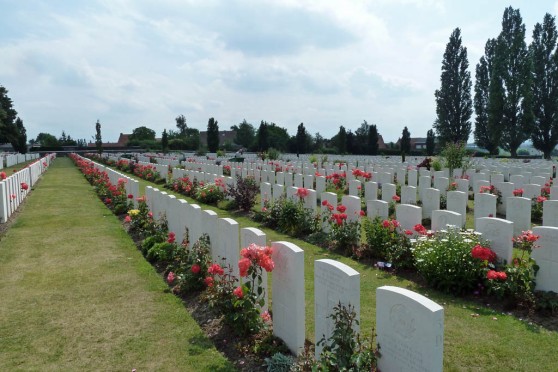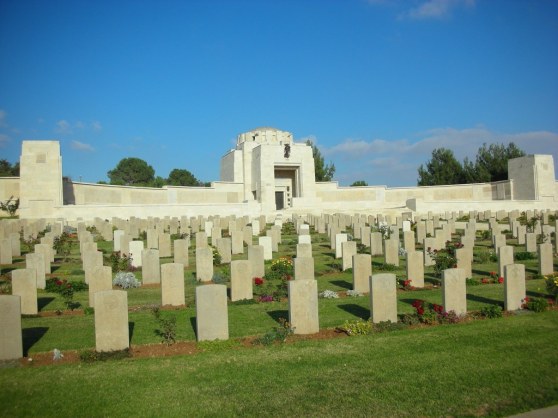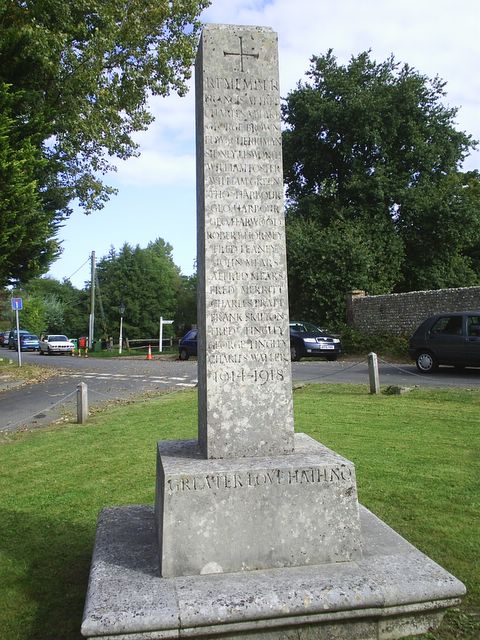Arthur Leslie Mears
Arthur was born on Christmas Day 1892 in Ditchling to Alfred Amos and Lucy Ellen Mears. He was christened in Westmeston on 26th March 1893. He had brothers George, Alfred, William and Robert and a sister Elsie. The 1901 census recorded the family living on Ditchling Common, at 6 City Cottages. 8 year old Arthur was at school and his father was a cowman on a farm. Living next door but one was his cousin John Mears and his family.
Aged 18 by the time of the next census in 1911 Arthur was living in the High Street Ditchling with his widowed aunt Eliza Buckman and her young children. He was a gardener. His parents and siblings were still living in City Cottages.
Arthur enlisted in Brighton in October 1914 and went into the 3rd Battalion, Coldstream Guards and was promoted to Lance Corporal. He completed months of training before moving to France and Belgium in April 1915 where, through the ensuing months and years his battalion was involved in many of the major battles of the war.
In June 1917 the British achieved some success in the taking of the Messines Ridge. A further attack was planned for later in the summer and this became known as the Third Battle of Ypres or Passchendaele. Field Marshall Haig, despite being warned that the terrain was low lying reclaimed swamp, ordered the battle to commence and in July and August intensive shelling churned up the ground that was saturated after the worst rains for 30 years.
On every square yard of the ground nearly five tons of high explosive had fallen. The result was that the drainage system collapsed and the area was turned into heavy swamp by heavy rain. ….Haig then ordered hundreds of thousands of men to fight on foot in mud so deep that 90 men drowned in it.
General Gough in command of the 5th army was horrified by the state of the battlefield. He reported to Field Marshall Haig:
The state of the ground was by this time frightful. The labour of bringing up supplies and ammunition, of moving or firing the guns, which had often sunk up to their axles, was a fearful strain on the officers and men, even during the daily task of maintaining the battle front. When it came to the advance of infantry for an attack, across the water logged shell-holes, movement was so slow and fatiguing that only the shortest advances could be contemplated.
A personal account written by a soldier fighting in the Battle of Passchendaele described the appalling conditions the men faced:
deep devouring mud spread deadly traps in all directions. We splashed and slithered and dragged our feet from the pull of an invisible enemy determined to suck us into its depths. Every few steps someone would slide and stumble and, weighed down by rifle and equipment, rapidly sink into the squelching mess. Those nearest grabbed his arms, struggled against being themselves engulfed and, if humanly possible, dragged him out. When helpers floundered in as well and doubled the task it became hopeless. All the straining efforts failed and the swamp swallowed its screaming victims, and we had to be ordered to plod on dejectedly and fight this relentless enemy as stubbornly as we did those we could see… To be ordered to go ahead and leave a comrade to such a fate was the hardest experience one could be asked to endure, but the objective had to be reached, and we plunged on, bitter anger against the evil forces prevailing, piled on to our exasperation. This was as near to Hell as I ever want to be.
(Private Norman Cliff, 1988, 1st Battalion Grenadier Guards. Steel & Hart pp266)
At the end of August 1917 Arthur was home on leave with his family. He returned to France and only two weeks later on 11th September 1917 he was killed in action. An extract from the 3rd Battalion War Diary for the week before he died states:
5th September: 400 men were required for laying out duck boards in the forward area. Individual training was done and young corporals paraded under the Sergeant Major daily. The assault was practised as there was a possibility of the Battalion taking part in a local attack.
Although there were no deaths recorded in the diary there were 5 soldiers killed on 5th and 6 more in the following days, one of which was Arthur.
The Mid Sussex Times reported on 9th October 1917:
KILLED IN ACTION. – Mr. and Mrs. Alfred Mears, of City Cottages, Ditchling Common, have been officially notified that their second son, Lance Corporal Arthur Leslie Mears, Coldstream Guards, was killed in action on September 11th. Deceased was a single man, 24 years of age last Christmas Day, joined the Army in October 1914, two months after war broke out. Previously he had been a gardener at the Downs, Hassocks, and at Preston (Brighton). He had quite recently been home on leave – in fact, had only gone back a fortnight before his death. Mrs. Mears has received deeply sympathetic letters from officers and non-commissioned officers of the Coldstreams, and in one of them it is stated her son was killed by a shell with several of his comrades. The shelling was very heavy indeed, “and your son did very well to stop and face it with his men. He inspired them with much confidence.”
A Lieutenant writes: – “You are the mother of one of the best Englishmen that have ever lived. In his death, too, he was an Englishman, and what better epitaph could be given to anyone?” A Corporal states that after the deceased’s body was found there was a smile on his face, which denoted that he had met his death quite bravely. Mr. and Mrs. Mears, who have two other sons and a son-in-law serving their country, desire through this medium, to express heartfelt thanks for the many tokens of sympathy received by them on the occasion of their son’s death.
This newspaper report suggested that Arthur’s body was retrieved and that he had a burial. However Arthur is commemorated at Tyne Cot Memorial to the Missing that was erected to commemorate those who died but who have no known grave. It is possible that the grave and grave marker were later destroyed by shelling, which did happen, or perhaps his comrades felt that it might lessen the blow to the grieving families if they were given the impression that he had been buried.
In 1922 King George V visited many War Grave Cemeteries including Tyne Cot.
Here the party left the train and proceeded by car to visit Tyne Cot Cemetery, which is in the midst of what was the most desolate and terrible of all battle-fields—the Passchendaele marshes. Of the nine thousand British soldiers buried in Tyne Cot Cemetery, over six thousand are “unknown.” The hateful mud swallowed up their identity with their lives.’ Taken from ‘The King’s Pilgrimage.
Alfred Mears
Tragedy was to strike again within the family only 3 weeks later. Alfred, Arthur’s younger brother was killed on 4th October. He served with the Royal Warwickshire Regiment and was only 19 years old. His death was also reported in the Mid Sussex Times on November 13th 1917:
LOST TWO SONS IN THE WAR. – Following upon the death of their son Arthur killed in action on September 11th, as previously reported in these columns, Mr. and Mrs. Alfred Mears, of City Cottages, Ditchling Common have now received official news that their third son, Private Alfred Mears, Royal Warwick Regiment, was killed in action on October 4th. He landed in France the day after his brother was killed. The following letter has been received by his parents from his officer, Lieutenant W. J. Crump: – “It is with the utmost regret that I have to pencil this letter to you in reply to your letter and telegram received yesterday. I realise what a great blow it must have been when I tell you that your brave son was killed whilst gloriously fighting against the Germans on the 4th of October. What a terrible war it is for your household, to think that you have given two sons in the past few weeks. The boy that I am writing about I knew personally, and I must say that he was a good and brave soldier. I assure you that he will be missed very much in the Company, since by his untiring efforts, whether conditions were good or bad, he made a great number of friends. May I offer you my very sincere sympathy in this your hour of trouble, and may God bless you and keep you, so that you may see that your sons have given their lives for the cause of right.
Alfred was buried at Tyne Cot Cemetery and is on Ditchling War Memorial alongside his cousin John Mears.
Both Arthur and Alfred are commemorated on the memorial in St John’s Church, Burgess Hill.
John Mears
Earlier in 1917, on 26th March, their cousin John Mears, who as a child had lived so close to Arthur and Alfred had also been killed in action. He was in the 4th Battalion Royal Sussex Regiment and in 1915 had sailed to Turkey where he fought at Gallipoli, at Suvla Bay. (see Henry Burgess). After that disastrous battle they had sailed again for Egypt and became part of the Egyptian Expeditionary Force. It was planned to invade the southern region of Palestine and the First Battle of Gaza took place on 26th March 1917 the day that John died. His name is on the Jerusalem Memorial to the Missing which stands outside the walled city of Jerusalem. He and cousin Alfred are also commemorated on the war memorial at Ditchling.

